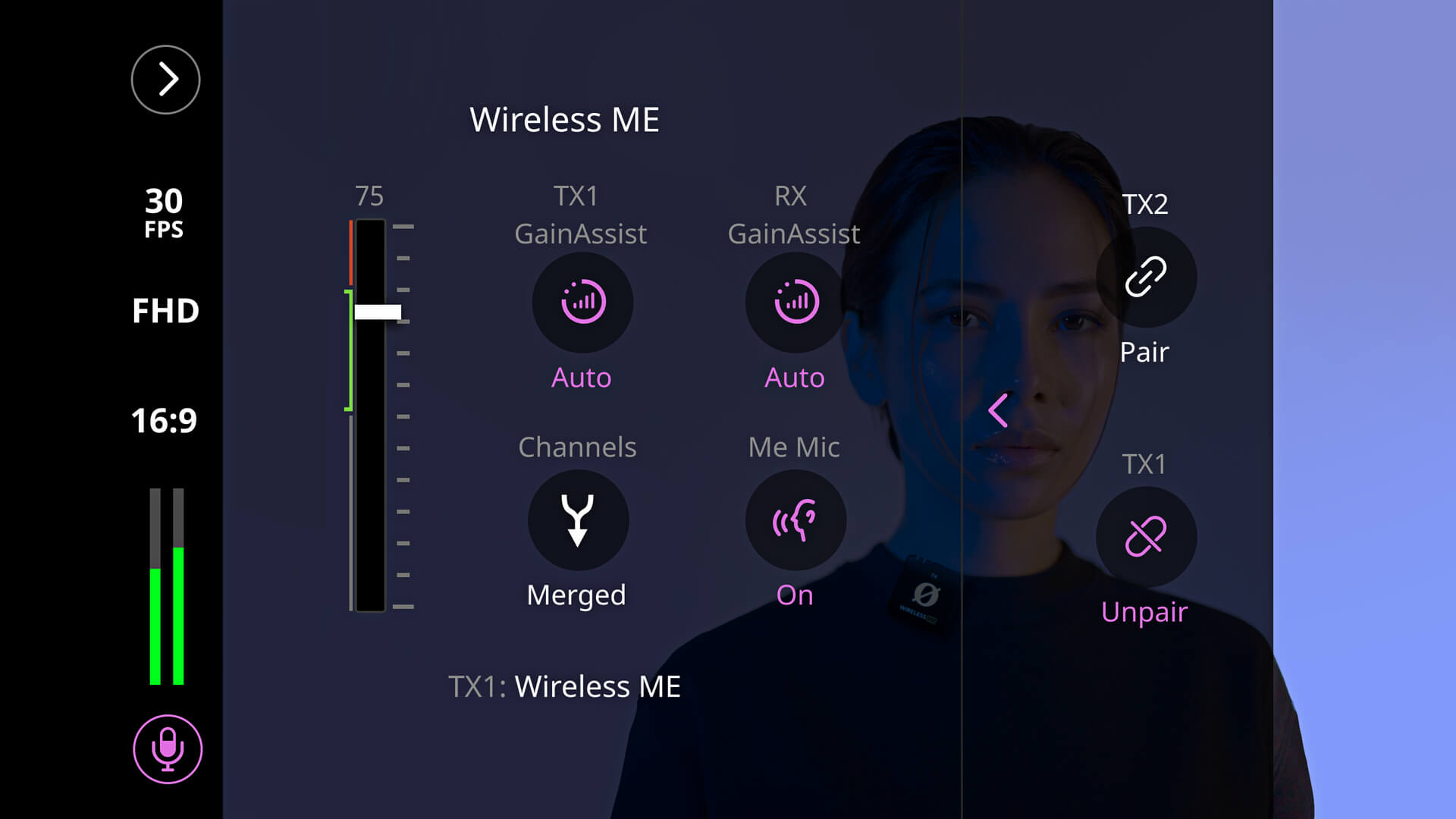What is GainAssist and Why Do You Need It?
With the launch of our Wireless ME ultra-compact wireless microphone system, we introduced an awesome new feature called GainAssist. In short, GainAssist will help keep your audio levels perfectly balanced and crystal clear without the need to constantly adjust your gain settings. In this article, we’ll take a deeper look at what GainAssist is, how it works, and how it will help you make better content.

As we mentioned, GainAssist was first introduced with the Wireless ME, which is designed to be as easy to use as possible, optimised to deliver professional sound quality with minimal setup or tweaking required.
For beginners and professionals alike, one of the biggest problems with capturing professional audio is setting and maintaining optimal gain levels. If your gain is set too high or your subject is too loud, your audio may clip and become unusable, but if the gain is too low or your subject too quiet, you’ll have to boost it later and potentially introduce some unwanted noise or create uneven audio.
The purpose of GainAssist is to remove this problem. This feature automatically adjusts your audio levels for you, so you don’t have to worry about accidentally setting the wrong gain level, or having to fiddle with these settings throughout the course of a recording if your subject’s volume level fluctuates. GainAssist takes the hassle out of recording so you can focus on the ‘creative’ part of content creation.
As well as helping to prevent your audio from clipping, GainAssist is great for simply ensuring that your audio is smooth, clear and balanced, without inconstancies in volume that can be unpleasant to listen to. Using GainAssist means your audio will sound exceptional without the need for further editing or processing post-production. This is particularly useful when you’re creating content on a smartphone and want to upload your videos directly to TikTok, YouTube Shorts, Instagram Reels or other platforms.
How Does GainAssist Work?

GainAssist utilises intelligent algorithms that automatically monitor the incoming audio and control your volume levels on-the-fly accordingly, ensuring your audio is perfectly balanced when it is sent to your camera. If the sound suddenly gets louder, GainAssist will compensate and bring the audio level down for you. If it is quieter, it will bring the audio level up. This ensures that your audio is smooth and balanced, and helps prevent clipping in your recording because any audio peaks that might have overloaded your camera’s input will be reduced.
You might be familiar with the term Automatic Gain Control (AGC), especially if you’ve used a DSLR camera before. Using this feature on a camera often results in strange-sounding recordings, with fluctuating levels and background noise in your audio. Our GainAssist technology is much more sophisticated than this type of AGC and will give you perfectly balanced, crystal-clear audio in almost any recording scenario, free from level pumping and background noise elevation.
How Do I Use GainAssist?
If you are using the Wireless ME with your phone or computer, your audio should always sound great when GainAssist is on. Simply connect the mic via USB-C and start recording. But it’s important to remember that if you are using the Wireless ME with a camera (via its 3.5mm analog output), you will still need to set the input gain on your camera to the right level to ensure a great result – check out the Wireless ME user guide for more on this topic.
There’s two GainAssist modes you can choose from – ‘Auto’ and ‘Dynamic’ – giving you the flexibility to choose the perfect setting for your particular recording scenario. You can select these settings (or choose to disable GainAssist) via the RØDE Central companion app, as well as via our pro video and audio app, RØDE Capture, which is free for iOS users. Let’s take a look at these different modes.
Should I Use the ‘Auto’ or ‘Dynamic’ GainAssist Mode?

'Auto' mode is enabled by default and is most likely going to be the right choice if you’re recording audio that varies a lot in volume. This mode will give you a smoother, more consistent sound, which can be better in recording scenarios like interviews, run-and-gun recordings and generally less predictable situations where your audio levels are jumping around a lot.
'Dynamic' mode, on the other hand, balances your levels while maintaining some of your audio’s dynamics, resulting in a more “natural” sound. This can be better in a controlled recording environment where the sound you’re recording is more even overall, such as a studio environment, professional home setup or similar.
With that said, these are very much generalisations as both modes work great in all scenarios, so it really comes down to your personal taste. We recommend trying out both modes to get an idea of how they sound and how they handle different situations, and choosing based on your preference.
Check out the Wireless ME for a super simple and ultra-compact solution for effortlessly recording professional audio for your content.